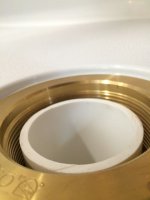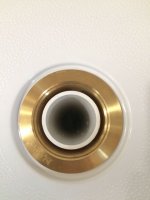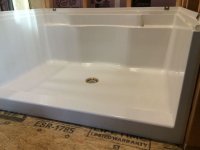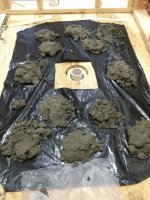DJL
New Member
I am installing a Sterling Accord shower in my basement and will be using an Oatey no caulk brass shower drain. This is my first shower install, so I'm trying to figure at what height to cut the 2" PVC drain pipe. I will be putting mortar piles under the shower base (as described in one of Terry's posts) so I'm thinking of leaving the the PVC pipe a little high and then squishing the base down until the top of the PVC pipe is about at the correct height in relation to the brass drain body.
My question is how exact do I need to get the height of the PVC drain pipe? When it's all said and done, does the bottom of the rubber compression gasket need to be seated/touching the bottom shelf/flange of the drain body? I'm not sure if I'm making sense here, so I'll ask another way: will the compression nut push the rubber gasket further down the PVC pipe until it seats on the bottom of the brass drain body -or- will the rubber gasket compress around the PVC pipe and stay in place by friction? Any advice is appreciated.
My question is how exact do I need to get the height of the PVC drain pipe? When it's all said and done, does the bottom of the rubber compression gasket need to be seated/touching the bottom shelf/flange of the drain body? I'm not sure if I'm making sense here, so I'll ask another way: will the compression nut push the rubber gasket further down the PVC pipe until it seats on the bottom of the brass drain body -or- will the rubber gasket compress around the PVC pipe and stay in place by friction? Any advice is appreciated.






